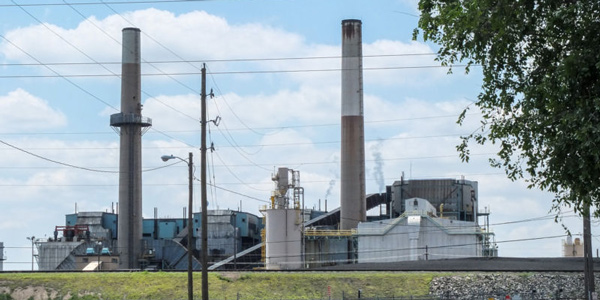By Rich Heidorn Jr.
EPA on Thursday proposed eliminating the requirement that new coal-fired generation incorporate carbon capture technology — a largely symbolic measure given competition from lower-cost natural gas and renewables that has cut coal’s market share.
The proposal would redefine the best system of emission reduction (BSER) for new, modified and reconstructed coal plants to “the most efficient demonstrated steam cycle in combination with best operating practices,” eliminating the Obama administration’s 2015 BSER requiring partial carbon capture and storage (CCS).
Acting EPA Administrator Andrew Wheeler, a former coal industry lobbyist, said the change replaces “onerous regulations with high, yet achievable, standards” in furtherance of President Trump’s executive order promoting energy independence.
The revised BSER would limit large, newly constructed steam units to 1,900 pounds of CO2 per megawatt-hour and new small units to 2,000 pounds/MWh. Newly constructed coal refuse-fired units would be limited to 2,200 pounds/MWh regardless of size (Docket # EPA-HQ-OAR-2013-0495).
EPA’s announcement said revising the New Source Performance Standards (NSPS) will “provide room for American energy production to continue to grow and diversify,” and Senate Majority Leader Mitch McConnell (R-Ky.) tweeted that the change will “bring relief to hardworking Kentucky families.”
But those predictions were undermined by a footnote in EPA’s Federal Register notice: “Power sector modeling does not predict the construction of any new coal-fired EGUs [electric generating units]. Therefore, based on modeled impacts, any [greenhouse gas] requirements for new coal-fired EGUs would have no significant costs or benefits.”
The Republicans’ spin on the announcement mirrored the Obama administration’s lack of candor when it proposed limiting emissions from new coal-fired units to 1,100 pounds/MWh, far below the levels of the most efficient coal plants without CCS, which range from 1,700 to 1,900 pounds/MWh.
Although critics said neither of the two CCS demonstration projects cited by EPA — Plant Ratcliffe in Kemper County, Miss., and the SaskPower plant in Canada — had demonstrated the commercially viability of the technology, then-EPA Administrator Gina McCarthy insisted that the rule was “clearly not” an effective ban on new coal plants. (See EPA GHG Rule May Turn on Viability of Carbon Capture.)
The Kemper County plant suspended the coal-gasification project in June 2017. SaskPower in July announced it would not expand its CCS project and instead would shut down two aging coal-fired plants.
Reaction
Pro-coal groups applauded the proposed rule change.
“Since the U.S will continue to rely on coal, it makes sense to invest in new high-efficiency, low-emissions coal-fired power plants to replace at least some of the plants that are retiring,” said Michelle Bloodworth, CEO of the American Coalition for Clean Coal Electricity. “EPA’s NSPS proposal can help achieve that goal by removing an unnecessary regulatory barrier.”
Environmentalists were outraged by EPA’s reversal, noting that the news came on the heels of increasingly dire climate change warnings in reports from the U.N. and the federal government. On Wednesday, scientists reported that after leveling off between 2014 and 2016, global CO2 emissions rose 1.6% in 2017 and 2.7% in 2018 to the highest levels on record.
“The Trump administration’s proposal to ease carbon capture requirements for new coal plants is an affront on the science of climate change and the very real economic harms associated with ignoring its reality,” said Lila Holzman, energy program manager of As You Sow.
But Mary Anne Hitt, director of the Sierra Club’s Beyond Coal campaign, insisted EPA’s announcement would not change the nation’s move from coal, noting the growth of renewable energy and Xcel Energy’s announcement this week that it is committing to 100% carbon-free generation by 2050. The Sierra Club campaign says 281 coal plants have retired or planned to do since 2010 while 249 generators remain on its target list.
Just two days ago, the Energy Information Administration reported that U.S. coal consumption in 2018 would be the lowest since 1979, reflecting a 4% drop from 2017. Retirements for the year are expected to near 14 GW, the second-highest on record. Another 4 GW of capacity are planning to retire by the end of 2019.
“Only one, relatively small, new coal-fired generator with a capacity of 17 MW is expected to come online by the end of 2019,” EIA said. It predicted power sector coal consumption will fall another 4% in 2018 and 8% in 2019.
Coal remains the top electric generation fuel for 18 states, EIA says.







